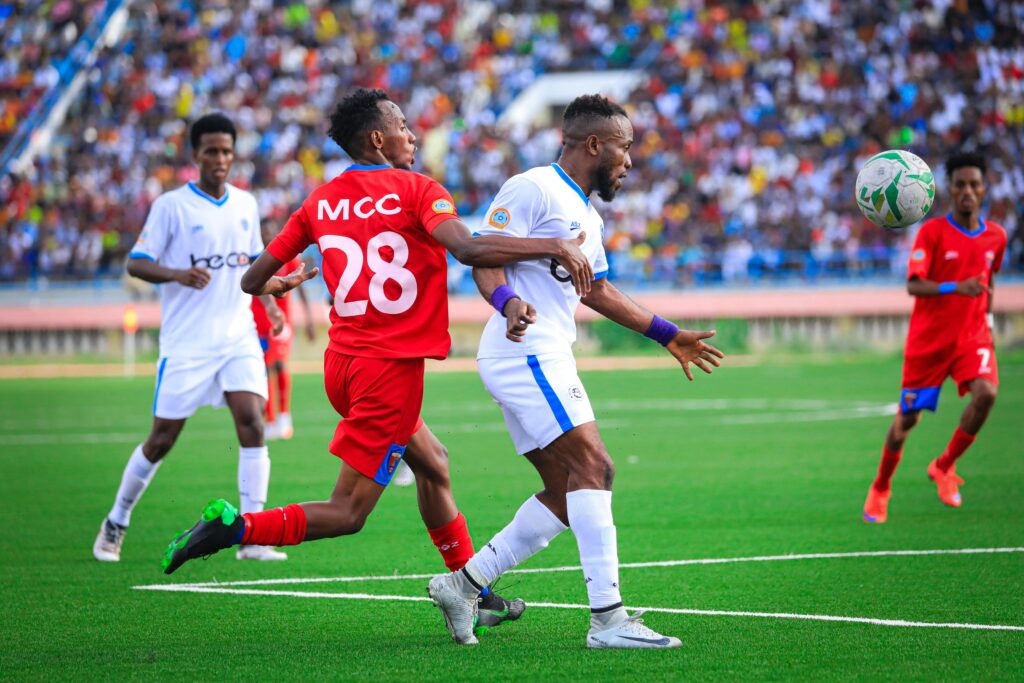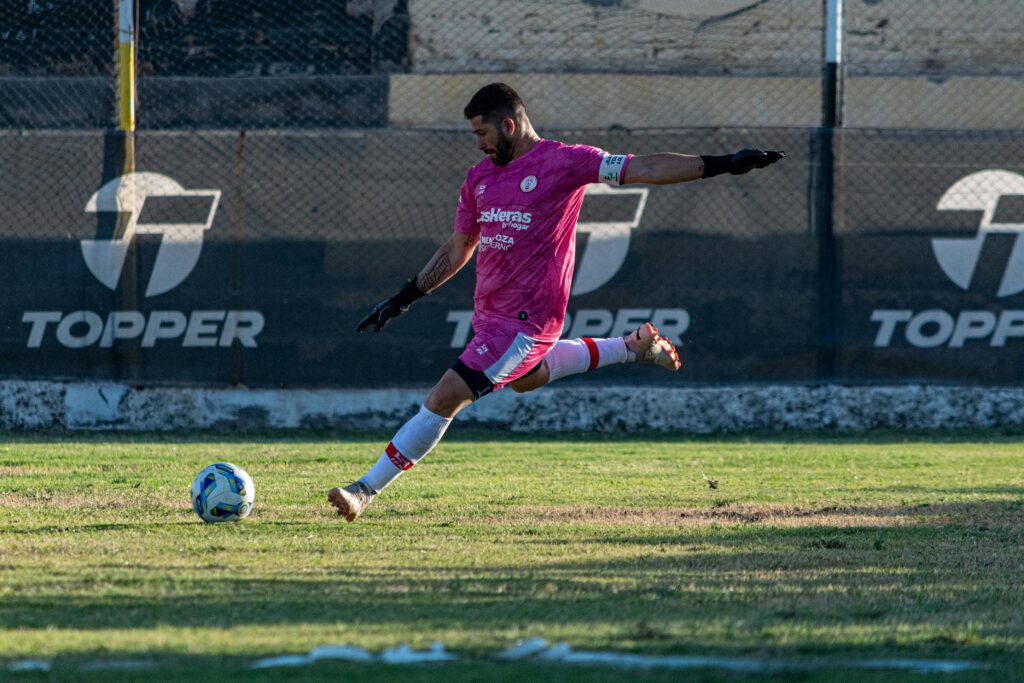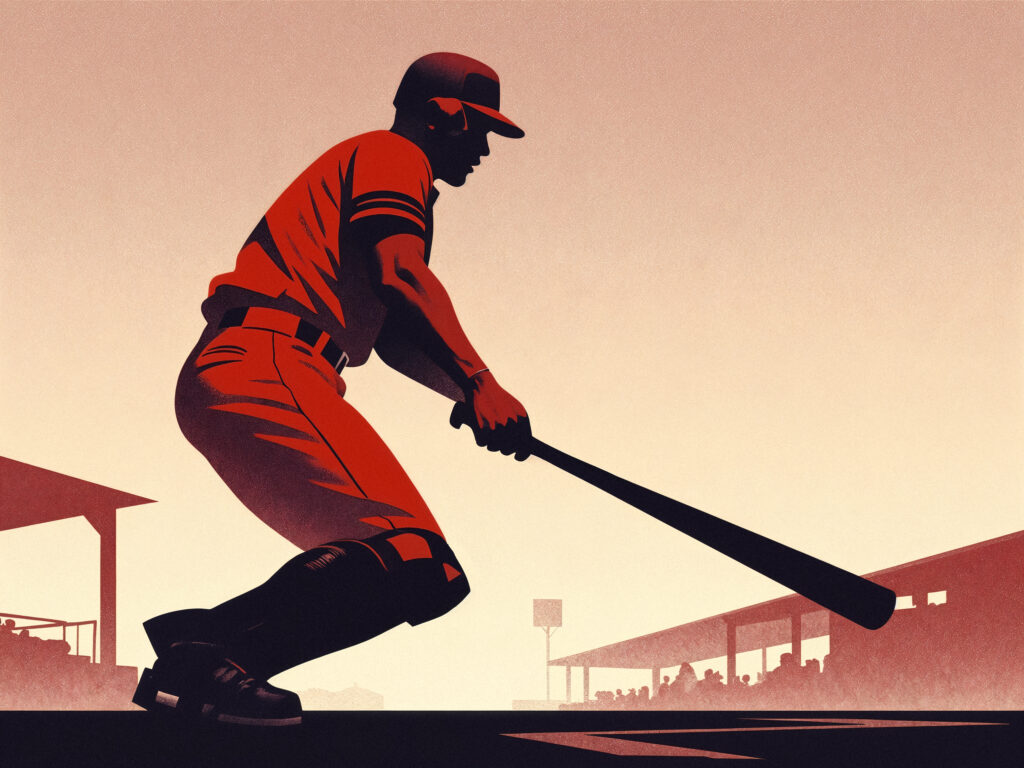
In modern football, tactical evolution never stops—and right now, the 3-5-2 formation is taking over elite competitions. Once seen as a defensive system, this shape has been transformed by top managers like Antonio Conte, Simone Inzaghi, and Julian Nagelsmann into a dominant, flexible, and possession-based strategy.
From the Premier League to Serie A and the Bundesliga, clubs are adopting the 3-5-2 to control midfield, overload wide areas, and create defensive solidity. But why is this formation suddenly so effective? The answer lies in its balance between attack and defense, its ability to exploit modern pressing systems, and its versatility against different opponents.
In this tactical breakdown, we’ll explore:
Why the 3-5-2 is replacing traditional formations like 4-3-3 and 4-2-3-1
How elite teams use wing-backs to dominate games
The best managers and clubs perfecting this system
Whether the 3-5-2 is the future of football tactics
Whether you’re a football coach, analyst, or fan, understanding this tactical revolution is key to decoding the modern game. Let’s dive in!
Why the 3-5-2 Formation Is Taking Over Modern Football
In the ever-evolving world of football tactics, formations come and go—but few have made as big an impact in recent years as the 3-5-2. Once considered a defensive-minded system, the 3-5-2 has been reinvented by elite managers to dominate possession, control midfield, and overwhelm opponents in attack.
From Antonio Conte’s Premier League title-winning Chelsea to Simone Inzaghi’s Champions League-finalist Inter Milan, the 3-5-2 is proving to be the most adaptable and effective formation in modern football. But why is it suddenly so popular?
The Evolution of the 3-5-2: From Defensive Shell to Attacking Weapon
A Brief History of the 3-5-2
The 3-5-2 formation has roots in Italian football, where it was traditionally used as a defensive, counter-attacking system. Coaches like Giovanni Trapattoni and Marcello Lippi deployed it to absorb pressure and hit teams on the break.
However, in the last decade, managers like Antonio Conte and Simone Inzaghi have transformed it into a possession-based, high-pressing system that dominates games.
Key Changes That Made the 3-5-2 Lethal
-
Wing-backs as attacking weapons (e.g., Achraf Hakimi, Ivan Perišić)
-
Dual strikers creating overloads (e.g., Lautaro Martínez & Romelu Lukaku at Inter)
-
Three center-backs allowing defensive stability while pushing midfielders forward
Tactical Advantages: Why the 3-5-2 Is Outperforming 4-3-3 and 4-2-3-1
Midfield Dominance
The extra midfielder in the 3-5-2 (compared to a 4-4-2 or 4-2-3-1) allows teams to control possession and overload central areas.
-
Example: Inter Milan’s midfield trio (Barella, Çalhanoğlu, Mkhitaryan) dominated Man City in the 2023 UCL final.
Defensive Solidity with Attacking Flexibility
-
Three center-backs provide cover against counterattacks.
-
Wing-backs can push high or drop back as needed.
-
Dual strikers create 2v2 or 2v1 situations against opposing center-backs.
Beating the High Press
Many top teams (like Liverpool and Man City) rely on aggressive pressing. The 3-5-2’s numerical superiority in defense and midfield makes it easier to play out from the back.
-
Example: Atalanta’s 3-5-2 dismantled Liverpool’s press in the 2020 UCL.
Elite Teams & Managers Perfecting the 3-5-2
Antonio Conte’s Chelsea (2016-17 Premier League Title)
-
Used Victor Moses & Marcos Alonso as attacking wing-backs.
-
N’Golo Kanté shielded the back three, allowing midfielders to push forward.
Inter Milan (2023 UCL Finalists Under Simone Inzaghi)
-
Wing-backs (Dumfries & Dimarco) provided width and creativity.
-
Lautaro & Lukaku formed one of Europe’s deadliest strike partnerships.
Julian Nagelsmann’s RB Leipzig & Bayern Munich
-
Adapted the 3-5-2 into a high-pressing, possession-based system.
-
Used Alphonso Davies as a hybrid wing-back/winger.
Weaknesses of the 3-5-2 (And How Top Teams Exploit It)
No formation is perfect—here’s where the 3-5-2 can struggle:
Vulnerable to Elite Wingers (If Wing-Backs Are Caught High)
-
Teams like Man City (with Foden & Grealish) can exploit spaces behind wing-backs.
Requires Specific Player Profiles
-
Need physically dominant center-backs (e.g., Bastoni, Akanji).
-
Wing-backs must be elite athletes (e.g., Hakimi, Theo Hernández).
Can Be Overcrowded in Midfield Against a 3-4-3
-
Arsenal’s 3-4-3 under Arteta has successfully neutralized 3-5-2 systems.
From Defensive Staple to Attacking Powerhouse: The Evolution of the 3-5-2
The 3-5-2 formation has undergone one of the most remarkable transformations in football history. Once viewed as a cautious, defensive system, it has evolved into one of the most dynamic and attack-minded setups in modern football.
This tactical revolution didn’t happen overnight—it was shaped by visionary coaches, tactical trends, and the demands of the modern game. Today, the 3-5-2 isn’t just a formation; it’s a philosophy that blends defensive solidity with attacking fluidity.
The Defensive Roots: Where the 3-5-2 Began
🇮🇹 Italian Catenaccio & the Birth of the Back Three
The 3-5-2 has its roots in Italian football, particularly the Catenaccio system of the 1960s and 70s. Coaches like Helenio Herrera (Inter Milan) and Nereo Rocco (AC Milan) used a libero (sweeper) behind two man-marking center-backs to create an ultra-defensive structure.
Key Traits of Early 3-5-2:
-
Deep defensive line
-
Counter-attacking focus
-
Wing-backs as supplementary defenders, not attackers
🇦🇷 Argentina’s 1986 World Cup Triumph: A Defensive Masterclass
One of the most famous early uses of the 3-5-2 was Carlos Bilardo’s Argentina in the 1986 World Cup. With Diego Maradona as the free-roaming playmaker, the system relied on:
-
Compact defensive shape
-
Quick transitions to Maradona
-
Hard-working midfielders covering space
The First Evolution: From Defense to Balance

🇩🇪 Jupp Heynckes’ Bayern Munich (2012-2013 Treble Winners)
One of the first major shifts came when Jupp Heynckes used a 3-5-2 hybrid at Bayern Munich. While still defensively strong, his system introduced:
-
Philipp Lahm & David Alaba as attacking wing-backs
-
Bastian Schweinsteiger & Javi Martínez controlling midfield
-
Mario Mandžukić & Thomas Müller pressing high
This balanced approach helped Bayern dominate possession while remaining defensively secure—culminating in a Champions League title.
🇮🇹 Antonio Conte’s Juventus (2011-2014: Serie A Dominance)
Antonio Conte’s Juventus was the first team to fully modernize the 3-5-2, turning it into a pressing, possession-based system.
Key Innovations:
-
Andrea Pirlo as a deep-lying playmaker
-
Wing-backs (Lichtsteiner & Asamoah) providing width
-
Three center-backs comfortable in possession (Chiellini, Bonucci, Barzagli)
This system helped Juventus go unbeaten in Serie A (2011-12) and laid the blueprint for Conte’s future success.
The Attacking Revolution: The 3-5-2 as a Dominant Force
Antonio Conte’s Chelsea (2016-17 Premier League Title)
Conte’s Chelsea took the 3-5-2 to new attacking heights, using:
-
Marcos Alonso & Victor Moses as relentless wing-backs
-
N’Golo Kanté shielding the defense
-
Diego Costa & Eden Hazard as a fluid strike partnership
The result? A Premier League title with 93 points and 85 goals scored.
Simone Inzaghi’s Inter Milan (2020-Present: UCL Finalists)
Simone Inzaghi’s Inter Milan has perfected the attacking 3-5-2, using:
-
Wing-backs (Dumfries, Dimarco) as primary creators
-
Lautaro Martínez & Romelu Lukaku as a devastating strike duo
-
Midfielders (Barella, Çalhanoğlu) pushing into the box
This approach led Inter to a Champions League final (2023) and a Serie A title (2024).
The Modern 3-5-2: A Complete Tactical System
Why It’s Now an Attacking Formation
-
Wing-backs are now wingers (e.g., Theo Hernández, Trent Alexander-Arnold).
-
Center-backs step into midfield (e.g., John Stones, Alessandro Bastoni).
-
Dual strikers create mismatches (e.g., Haaland & Álvarez at Man City).
Statistical Dominance
-
Inter Milan (2023-24): Most goals in Serie A with a 3-5-2.
-
Chelsea (2016-17): Most clean sheets in the Premier League.
How Elite Managers Like Conte, Inzaghi, and Nagelsmann Perfected the 3-5-2
The 3-5-2 formation has become one of the most dominant tactical systems in modern football, but its success is largely due to the innovative managers who reshaped it. Antonio Conte, Simone Inzaghi, and Julian Nagelsmann have each put their unique stamp on the system, turning it from a defensive setup into an attacking, pressing, and possession-based powerhouse.
1. Antonio Conte: The Architect of the Modern 3-5-2
Juventus (2011-2014): Defensive Solidity Meets Midfield Control
When Conte took over Juventus, he inherited a struggling squad—but his 3-5-2 transformation turned them into Serie A dominators.
Key Innovations:
Andrea Pirlo as a regista – Dropping deep to dictate play
Aggressive wing-backs (Lichtsteiner & Asamoah) – Providing width in attack
The BBC Defense (Barzagli-Bonucci-Chiellini) – Unbreakable back three
Result: Three straight Serie A titles, including an unbeaten season (2011-12).
Chelsea (2016-17): Premier League Domination
Conte’s 3-5-2 at Chelsea shocked the Premier League, proving the system could work in a faster, more physical league.
Key Adjustments:
Marcos Alonso & Victor Moses as attacking wing-backs
N’Golo Kanté as a midfield destroyer
Diego Costa & Eden Hazard as a fluid strike pair
Result: Premier League title (93 points) and most clean sheets (16).
Tottenham & Inter Milan: Refining the System
At Inter Milan, Conte won Serie A (2020-21) with Lukaku & Lautaro as one of Europe’s deadliest duos. Even at Tottenham, he implemented a 3-5-2 hybrid before his departure.
Legacy: Conte proved the 3-5-2 could dominate in multiple leagues.
2. Simone Inzaghi: The Attacking Maestro
Lazio (2016-2021): Laying the Foundations
Before Inter, Inzaghi used a 3-5-2 at Lazio with:
Ciro Immobile as a lethal lone striker
Luis Alberto & Sergej Milinković-Savić as creative midfielders
Manuel Lazzari as an ultra-attacking wing-back
Result: Coppa Italia (2019) and consistent top-four challenges.
Inter Milan (2021-Present): The 3-5-2 at Its Best
Inzaghi took Conte’s system and made it even more attacking:
Key Upgrades:
Wing-backs as primary creators – Dumfries & Dimarco combined for 15+ assists in 2023-24
Midfielders pushing into the box – Barella & Çalhanoğlu became goal threats
Lautaro Martínez as a complete forward – 24+ league goals in back-to-back seasons
Result:
-
Champions League final (2023)
-
Scudetto (2024)
-
Most goals in Serie A (2023-24)
Why It Works: Inzaghi’s high-pressing, possession-based 3-5-2 is the most fluid version yet.
3. Julian Nagelsmann: The Hybrid Innovator
RB Leipzig (2019-2021): The Pressing Machine
Nagelsmann’s 3-5-2 at Leipzig was a pressing monster:
Angeliño & Mukiele as inverted wing-backs
Dani Olmo as a floating attacking midfielder
Fast transitions to Werner & Poulsen
Result: Champions League semifinal (2020) and Bundesliga top-three finishes.
Bayern Munich (2021-2023): The 3-5-2 Meets Positional Play
At Bayern, Nagelsmann blended the 3-5-2 with Pep-style positional play:
Alphonso Davies as a winger-wing-back hybrid
Joshua Kimmich as a deep-lying playmaker
Müller & Musiala as free-roaming attackers
Result: Bundesliga title (2022), but struggles in UCL knockout stages.
Germany (2024-Present): The Latest Evolution
Now with Germany, Nagelsmann uses a 3-4-2-1 variant, proving the 3-5-2’s adaptability.
Legacy: Nagelsmann showed the 3-5-2 can be fused with other systems (like 4-2-3-1 or 3-4-3).
Why Their Systems Work: Common Tactical Themes
Despite their differences, Conte, Inzaghi, and Nagelsmann share key principles:
Wing-backs as key attackers – Not just defenders, but creators.
Three center-backs who can pass – Bonucci, Bastoni, Upamecano.
Midfield balance – One destroyer (Kanté), one playmaker (Pirlo/Çalhanoğlu).
Two strikers creating overloads – Lukaku-Lautaro, Costa-Hazard, Werner-Poulsen.
The Future: Who’s Next to Master the 3-5-2?
Thiago Motta (Bologna) – Uses a 3-5-2 with heavy possession.
Ruben Amorim (Sporting CP) – Aggressive pressing 3-5-2.
Pep Guardiola (Man City) – Experiments with a 3-2-4-1 hybrid.
3-5-2 vs. 4-3-3: Why Traditional Formations Are Struggling

For years, the 4-3-3 formation was considered the gold standard in football—used by legendary teams like Pep Guardiola’s Barcelona, Jurgen Klopp’s Liverpool, and Zinedine Zidane’s Real Madrid. But today, the 3-5-2 is emerging as the superior system, exposing key weaknesses in traditional setups.
Why is this happening? Modern football demands flexibility, defensive security, and midfield control—areas where the 3-5-2 thrives while the 4-3-3 struggles.
1. The Decline of the 4-3-3: Why It’s No Longer Unstoppable
The 4-3-3’s Golden Era
The 4-3-3 dominated football in the 2010s because:
- High pressing (Klopp’s gegenpressing, Pep’s positional play)
- Wingers isolating full-backs (Messi, Ronaldo, Salah, Mané)
- Midfield control (Xavi-Iniesta-Busquets at Barcelona)
But today, teams have figured out how to counter it.
Why the 4-3-3 Is Now Vulnerable
-
Struggles Against a Back Three – The 4-3-3 relies on wingers to stretch play, but 3-5-2 teams overload the flanks with wing-backs and midfielders, nullifying their threat.
-
Midfield Overloads – A 4-3-3’s single pivot (e.g., Rodri, Fabinho) can be overwhelmed by a 3-5-2’s dual central midfielders + wing-backs cutting inside.
-
Defensive Fragility on Counters – The 4-3-3’s high full-backs leave gaps that 3-5-2’s dual strikers exploit.
Example: Inter Milan’s 3-5-2 vs. Manchester City’s 4-3-3 (2023 UCL Final)
-
Inter’s wing-backs (Dumfries, Dimarco) pinned City’s full-backs
-
Lautaro & Lukaku ran at City’s two center-backs, creating 2v2 situations
-
City’s Rodri was isolated against Inter’s three midfielders
2. How the 3-5-2 Exploits the 4-3-3’s Weaknesses
Midfield Dominance (3v2 Overloads)
-
A 4-3-3 typically has one holding mid (e.g., Rodri) and two advanced midfielders.
-
The 3-5-2 floods the middle with three midfielders, creating 3v2 advantages.
Example: Atalanta 3-5-2 vs. Liverpool 4-3-3 (2020 UCL)
-
Atalanta’s midfield trio (De Roon, Freuler, Pasalic) overran Liverpool’s double pivot (Fabinho, Wijnaldum)
-
Result: 2-0 win for Atalanta
Defensive Stability vs. Wingers
-
In a 4-3-3, wingers (e.g., Salah, Vinícius Jr.) rely on 1v1s against full-backs.
-
The 3-5-2’s wing-backs + wide center-backs double up on wingers, shutting them down.
Example: Chelsea’s 3-5-2 vs. Man City’s 4-3-3 (2021 UCL Final)
-
Reece James & Azpilicueta nullified Sterling & Foden
-
Kanté dominated City’s midfield
-
Result: 1-0 Chelsea win
Attacking Overloads Against a Back Four
-
A 4-3-3’s back four struggles against a 3-5-2’s dual strikers + wing-backs.
-
Center-backs get pulled wide, leaving gaps for late midfield runners.
Example: Inter Milan 3-5-2 vs. AC Milan 4-3-3 (2023 UCL Semifinal)
-
Lautaro & Lukaku vs. Tomori & Kjær – constant 2v2 battles
-
Dumfries & Dimarco stretched Milan’s full-backs
-
Result: 3-0 aggregate win for Inter
3. Can the 4-3-3 Adapt? Hybrid Solutions
Some managers are tweaking the 4-3-3 to survive:
Pep Guardiola’s 4-2-3-1 / 3-2-4-1 Hybrid
-
Uses John Stones stepping into midfield to create a back three in possession.
-
Helps match the 3-5-2’s midfield numbers.
Jurgen Klopp’s 4-2-3-1 Adjustments
-
Trent Alexander-Arnold inverting into midfield (like a wing-back).
-
More compact defensive shape to avoid 3-5-2 overloads.
But these are reactive fixes—the 3-5-2 is still winning the tactical battle.
4. The Future: Will the 3-5-2 Replace the 4-3-3?
Evidence Suggests Yes
-
More elite teams (Inter, Atalanta, Leipzig, Conte’s Spurs) use 3-5-2.
-
Youth academies now training wing-backs instead of traditional full-backs.
-
Hybrid systems (like Pep’s 3-2-4-1) borrowing from 3-5-2 principles.
The Next Evolution: Positionless Football?
-
Nagelsmann’s Germany uses a 3-4-2-1 with floating midfielders.
-
Arsenal’s 3-2-5 in attack mimics the 3-5-2’s overloads.
Conclusion: The 3-5-2 Is the New Benchmark
The 4-3-3 isn’t dead, but it’s no longer the best system against modern tactics. The 3-5-2’s balance, defensive security, and midfield control make it the formation of the future.
At the heart of the unrest lies a deepening divide between the supporters and the decision-makers, threatening to fracture the unity that once defined the South London club. This is more than just football—this is a battle for the soul of Crystal Palace.



